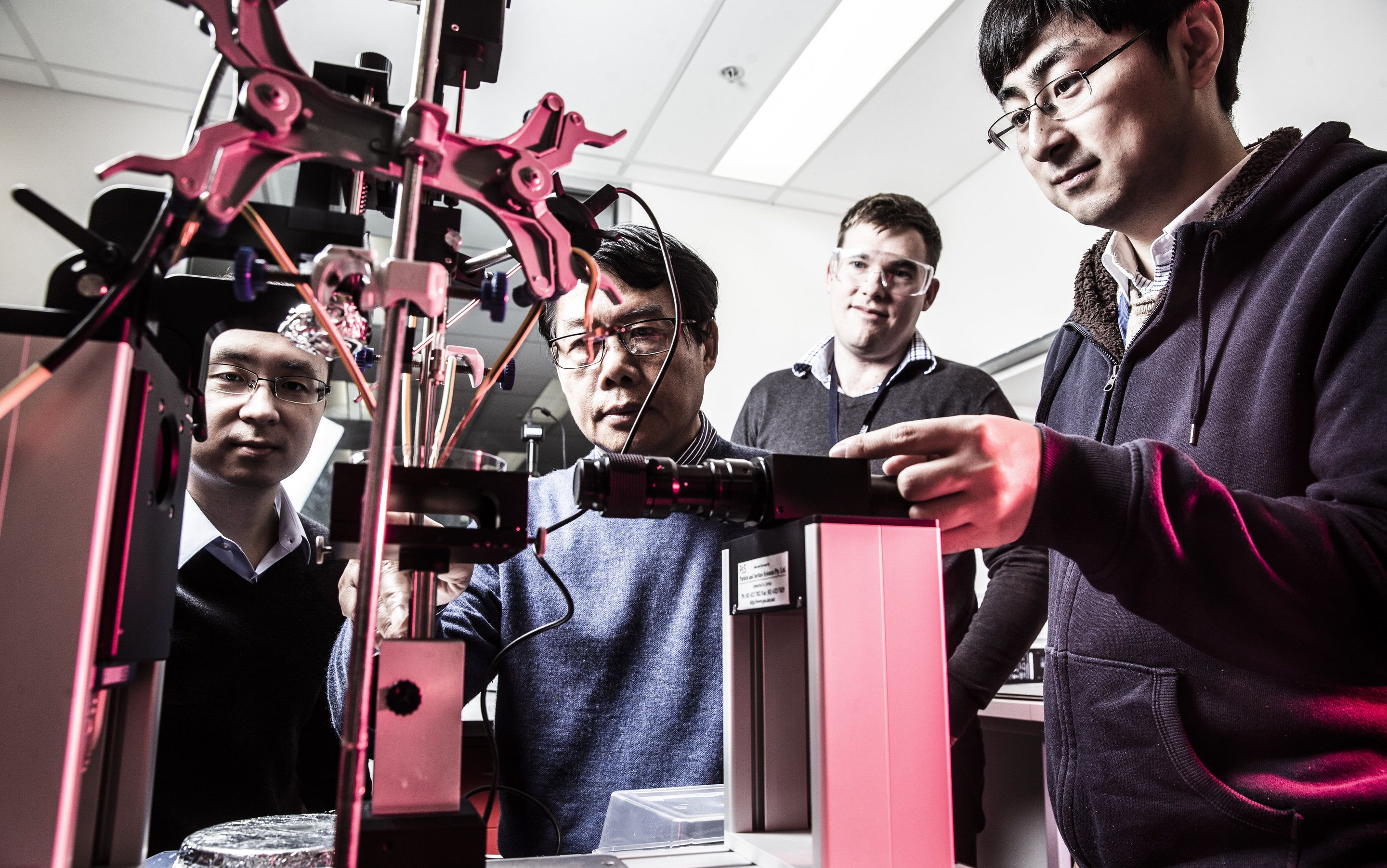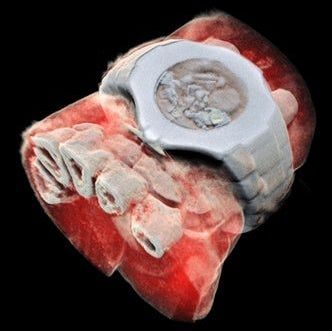If the sun stopped working for 24 hours, what would happen to Earth?
Get the latest international news and world events from around the world.

Science fiction becomes science fact as researchers create liquid metal heartbeat
In a breakthrough discovery, University of Wollongong (UOW) researchers have created a “heartbeat” effect in liquid metal, causing the metal to pulse rhythmically in a manner similar to a beating heart.
Their findings are published in the 11 July issue of Physical Review Letters, the world’s premier journal for fundamental physics research.
The researchers produced the heartbeat by electrochemically stimulating a drop of liquid gallium, causing it to oscillate in a regular and predictable manner. Gallium (Ga) is a soft silvery metal with a low melting point, becoming liquid at temperatures greater than 29.7C.
Harnessing natural gas to harvest water from the air might solve two big problems at once
One of the biggest freshwater reservoirs in the world is, literally, up in the air.
Between 6 and 18 million gallons of freshwater hover above every square mile of land, not counting droplets trapped in clouds. Scientists realized this centuries ago but they have never quite figured out how to bring the water down to earth. The effort required to condense it would consume such vast quantities of energy that it has always appeared to make any effort to capture and use this water uneconomical.
But while studying this topic, two of my University of Texas at Austin colleagues and I came up with a concept that might just work: that of using the natural gas that is otherwise flared from oilfields to harvest atmospheric moisture.

Surviving the odds
Is life extension at… odds with probability?
Does probability ensure that you will die, no matter what, once you are old enough? Does it throw the ultimate spanner in the works of life extension? The answer is not as clear-cut as you might think.
Recently, a study from Sapienza University in Italy has revived the idea of the so-called “mortality plateaus”—the apparent flattening of mortality rates in people aged above 100, suggesting that the maximum mortality rate of such people is 50% at age 105 [1]. However, even if this mortality rate remained constant for as long as you lived, you’d still be overwhelmingly likely to die relatively soon.
What may be even more disheartening is that, if you had a constant, larger-than-zero probability of dying, then no matter how small it was, you’d be overwhelmingly likely to die past a certain point in time, be it even billions of years into the future. As a matter of fact, over an infinite time, that probability would be exactly 100%. However, the situation is not as dire as it seems.
This 3D-Printed Bone Can Grow With You
This new 3D-printed bone graft melds with your existing bone, becomes new bone, and can even grow with you. (via National Science Foundation (NSF))

Report on the 11th Annual Concertation and Consultation Workshop on Micro-Nano-Bio-Systems: MNBS 2017
This report covers the 11th edition of the EU-funded MicroNanoBio Systems cluster annual MNBS Bioelectronics Workshop, which took place in Amsterdam at the Beurs van Berlage on 12th-13th December 2017 and was included as part of the International Micro Nano Conference 2017, of which the main topics were Microfluidics and Analytical Systems, Fabrication and Characterization at the Nanoscale, and Organ-on-a-Chip.

The market for alternative-protein products
Here, the problem is marketing. Around 2bn people eat insects already, but few of them are Westerners. Changing that could be a hard sell. Grind the bugs up and use them as ingredients, though, and your customers might find them more palatable. Hargol FoodTech, an Israeli startup, plans to do just that. Locust burgers, anybody?
MOST people like to eat meat. As they grow richer they eat more of it. For individuals, that is good. Meat is nutritious. In particular, it packs much more protein per kilogram than plants do. But animals have to eat plants to put on weight—so much so that feeding livestock accounts for about a third of harvested grain. Farm animals consume 8% of the world’s water supply, too. And they produce around 15% of unnatural greenhouse-gas emissions. More farm animals, then, could mean more environmental trouble.
Some consumers, particularly in the rich West, get this. And that has created a business opportunity. Though unwilling to go the whole hog, as it were, and adopt a vegetarian approach to diet, they are keen on food that looks and tastes as if it has come from farm animals, but hasn’t.
Get our daily newsletter
Upgrade your inbox and get our Daily Dispatch and Editor’s Picks.

New DNA Synthesis Method Could Soon Build a Genome in a Day
Synthetic biologists are the computer programmers of biology. Their code? DNA.
The whole enterprise sounds fantastical: you insert new snippets of DNA code—in the form of a chain of A, T, C, G letters—into an organism, and bam! Suddenly you have bacteria that can make anti-malaria drugs or cells that can solve complicated logic problems like a computer.
Except it’s not that simple. The basis of synthetic biology is DNA—often a lot of it, in the form of many genes. Making an average gene from scratch costs several hundreds of dollars and weeks of time. Imagine a programmer taking a month to type a new line of code, and you’ll likely understand a synthetic biologist’s frustration.
Nvidia Taught an AI to Flawlessly Erase Watermarks From Photos
Photographers already face an uphill battle in trying to preventing people from using their digital photos without permission. But Nvidia could make protecting photos online much harder with a new advancement in artificial intelligence that can automatically remove artifacts from a photograph, including text and watermarks, no matter how obtrusive they may be.
In previous advancements in automated image editing and manipulation, an AI powered by a deep learning neural network is trained on thousands of before and after example photos so that it knows what the desired output should look like. But this time, researchers at Nvidia, MIT, and Aalto University in Finland, managed to train an AI to remove noise, grain, and other visual artifacts by studying two different versions of a photo that both feature the visual defects. Fifty-thousand samples later, the AI can clean up photos better than a professional photo restorer.

CERN chip enables first 3D color X-ray images of the human body
Medical X-ray scans have long been stuck in the black-and-white, silent-movie era. Sure, the contrast helps doctors spot breaks and fractures in bones, but more detail could help pinpoint other problems. Now, a company from New Zealand has developed a bioimaging scanner that can produce full color, three dimensional images of bones, lipids, and soft tissue, thanks to a sensor chip developed at CERN for use in the Large Hadron Collider.
Mars Bioimaging, the company behind the new scanner, describes the leap as similar to that of black-and-white to color photography. In traditional CT scans, X-rays are beamed through tissue and their intensity is measured on the other side. Since denser materials like bone attenuate (weaken the energy) of X-rays more than soft tissue does, their shape becomes clear as a flat, monochrome image.
